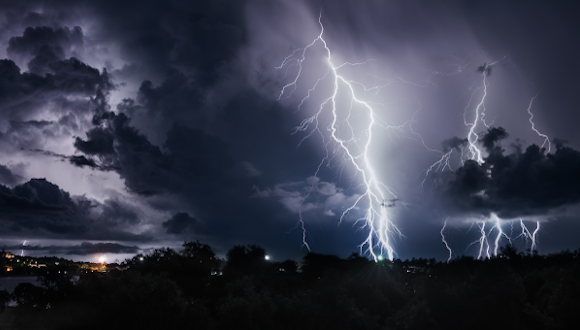Lightning’s electromagnetic fields may have protective properties

Extremely low frequency fields may have played an evolutionary role in living organisms, say TAU researchers
Support this researchLightning was the main electromagnetic presence in the Earth’s atmosphere long before the invention of electricity. There are some 2,000 thunderstorms active at any given time, so humans and other organisms have been bathed in extremely low frequency (ELF) electromagnetic fields for billions of years.
These electromagnetic fields — the result of global lightning activity known as Schumann Resonances — are weak and difficult to detect. Scientists never suspected that they had any tangible impact on life on Earth. But a new Tel Aviv University study finds that these fields may have protective properties for organisms living under stress conditions.
Research for the study was led by Prof. Colin Price of TAU’s Porter School of the Environment and Earth Sciences and conducted by his doctoral student Gal Elhalel in collaboration with Profs. Asher Shainberg and Dror Fixler of Bar Ilan University. It was published in Nature Scientific Reports on February 7.
“We found that under controlled conditions, the Schumann Resonance fields certainly had an effect on living tissues,” Prof. Price says. “The most important effect was that the atmospheric ELF fields actually protected cells under stress conditions. In other words, when biological cells are under stress — due to lack of oxygen, for example — the atmospheric fields from lightning appear to protect them from damage. This may be related to the evolutionary role these fields have played on living organisms.”
In the course of numerous laboratory experiments, in which the scientists induced fields similar to those in the atmosphere, they witnessed significant effects on living heart cells of rats within 30-40 minutes. Extremely weak magnetic fields in the 7.6-8Hz frequency range induced a number of effects when applied to rat cardiac cells, including reductions in spontaneous contractions, calcium transients and the release of Creatine Kinase (CK). (The release of CK into the liquid medium around the cardiac cells is a measure of damage to cardiac cells, which also occurs during heart attacks.) The scientists found that the effects were temporary, as the induced cell changes reversed when the fields were turned off.
“It is the first study that demonstrates a link between global lighting activity and the Schumann Resonances and the activity of living cells,” Prof. Price says. “It may explain why all living organisms have electrical activity in the same ELF spectral range, and it is the first time such a connection has been shown. This may have some therapeutic implications down the line, since these ELF fields appear to protect cells from damage, but this requires further research.”
Prof. Price and his team are expanding their research to other types of biological cells to see if there is a similar effect of these electromagnetic fields on other cell types.